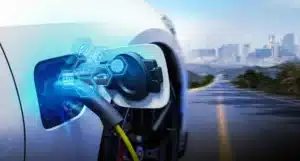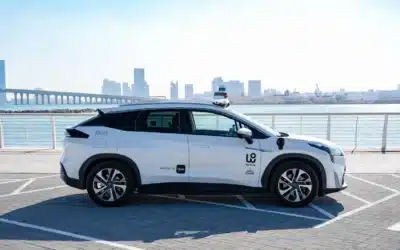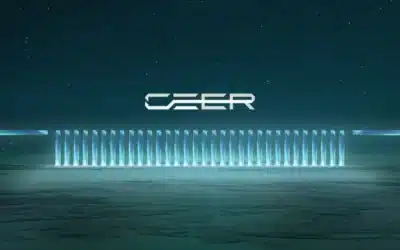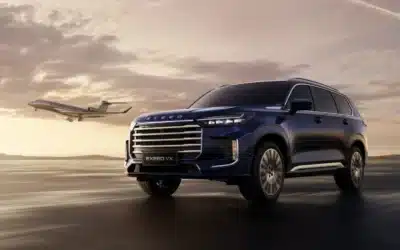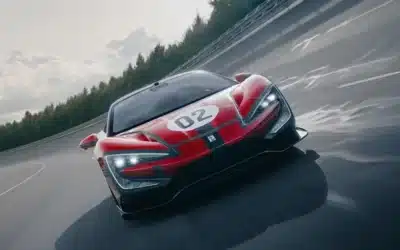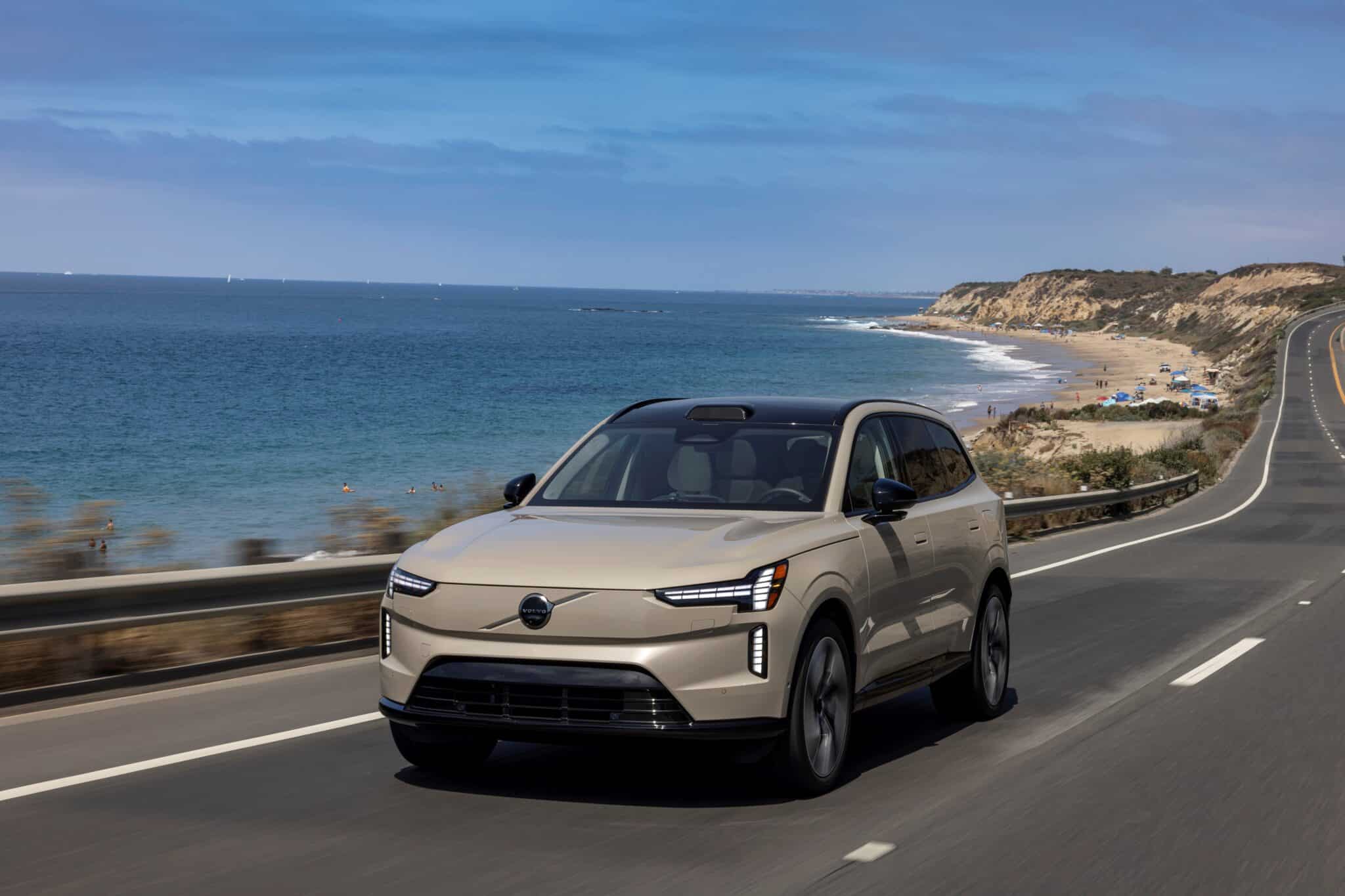
Times are interesting for Volvo. The Swedish car maker is grappling with several industry-wide challenges. The global car market is experiencing a deceleration in the demand for EVs, compounded by reduced consumer confidence, the withdrawal of government incentives, and increasing tariffs. These factors have negatively impacted Volvo’s stock price, pushing it to its lowest point since the company went public in 2021.
In response to these difficulties, Volvo has recalibrated its strategic objectives. The company announced a shift from focusing on revenue growth to increasing its market share within the premium automotive segment.
Notably, Volvo has also revised its earlier commitment to exclusively sell electric vehicles by 2030, opting to continue offering hybrid models into the next decade. By targeting customers from other brands, Volvo aims to bolster its presence in a crowded marketplace.
New EX90
Now, in what is being hailed as a significant milestone for the company, it has unveiled its new flagship model, the all-electric EX90. This vehicle not only embodies the company’s deep-rooted commitment to safety but ushers in a new era of sustainability and technological advancement for the iconic brand.
The EX90 stands out with its cutting-edge features and revolutionary design. It integrates a spectrum of advanced technologies, including state-of-the-art sensors, cameras, radar systems, and autonomous driving capabilities, which will be progressively introduced to the market. Moreover, it utilises an impressive array of recycled and renewable materials in its construction, marking a crucial step towards sustainability in the automotive industry.
Visually, the EX90 is characterized by its clean lines and functional interior, exuding a minimalistic yet modern aesthetic. As of now, this pioneering model is en route to retailers across the United States and Europe, with deliveries expected to reach customers before the end of the month. Volvo plans to escalate deliveries between the fourth quarter of 2023 and the first quarter of 2025, highlighting the high anticipations surrounding this model.
Volvo CEO Jim Rowan has personally tested the new model, taking the EX90 on an extensive road trip from South Carolina to California, covering over 950 kilometres (590 miles) through various states and driving conditions. Rowan’s feedback has been overwhelmingly positive, praising the vehicle’s performance, handling, comfort, and advanced features. He remarked, “Based on this trip, I can confidently say that the EX90 is the best car we have ever made.”
The EX90 marks several firsts for Volvo, including being the first model to use the NVIDIA DRIVE platform as its core system. This core system, in tandem with the Snapdragon Cockpit Platform and Volvo’s in-house developed software, manages critical functions such as safety features, infotainment systems, and battery management. Additionally, the EX90 is the first Volvo to feature LiDAR technology, aiming to set a new standard in automotive safety.
In terms of innovation, the EX90 also introduces bi-directional charging, which allows the vehicle to not only draw power from the grid but also supply energy back to it if needed. Furthermore, it is the world’s first automobile to offer the Abbey Road Studios mode, equipped with a Bowers & Wilkins flagship spec sound system, promising an unparalleled auditory experience.
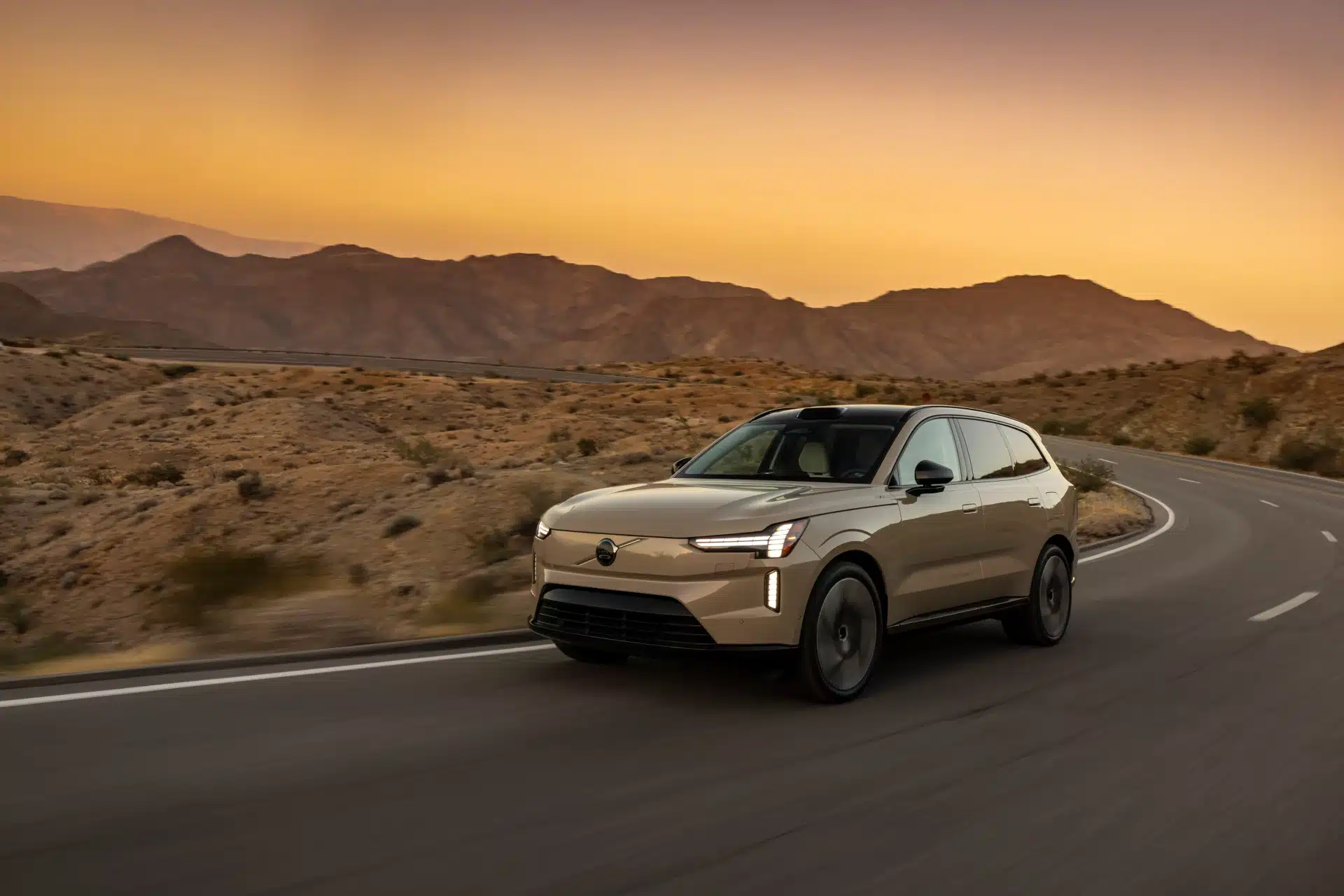
The EX90 is characterized by its clean lines and functional interior, exuding a minimalistic yet modern aesthetic.
And the S90 will be reincarnated as the ES90
Volvo has also announced the return of one of its cherished saloon models, the S90, in the form of an electric vehicle, the ES90. Although official specifics about the vehicle are yet to be disclosed, the speculation is rife about its potential to compete with established giants like BMW and Mercedes in the EV market segment. It will be officially unveiled in March 2025.
Dubbed the ES90, this new electric saloon is set to inherit some components from the EX90. The EX90 boasts a substantial 111kWh battery embedded in its floor, capable of supporting charging up to 250kW and delivering an impressive range of 374 miles. Fans and industry analysts anticipate the ES90 will feature similar specifications, positioning it as a competitive option for consumers seeking both luxury and sustainability.
The ES90 could potentially hit the market as early as next spring, followed by the release of another model, the EX60. Both vehicles are part of Volvo’s ambitious strategy to transition (eventually) to a fully electric lineup, utilising a new modular design platform that will underpin all future electric vehicles from the brand.
A critical component of these upcoming models is Volvo’s ‘Superset tech stack’, an integrated framework that oversees the entire electronics and connectivity package through a single stack. This tech suite is powered by an Nvidia chip and features an Android-based interface. Initially, the EX90 will debut this technology, and subsequent development is expected to benefit the ES90.
The original Volvo S90 saloon garnered significant attention and accolades upon its first teaser release in December 2015. It received the Production Car Design of the Year award the same year. At the time, it was available from £32,555 and featured a 1969cc four-cylinder turbo diesel engine. The S90 could accelerate from 0-62mph in 8.2 seconds and had a top speed of 140mph. Its dimensions included a length of 4,767mm and a turning circle of 11.4m.
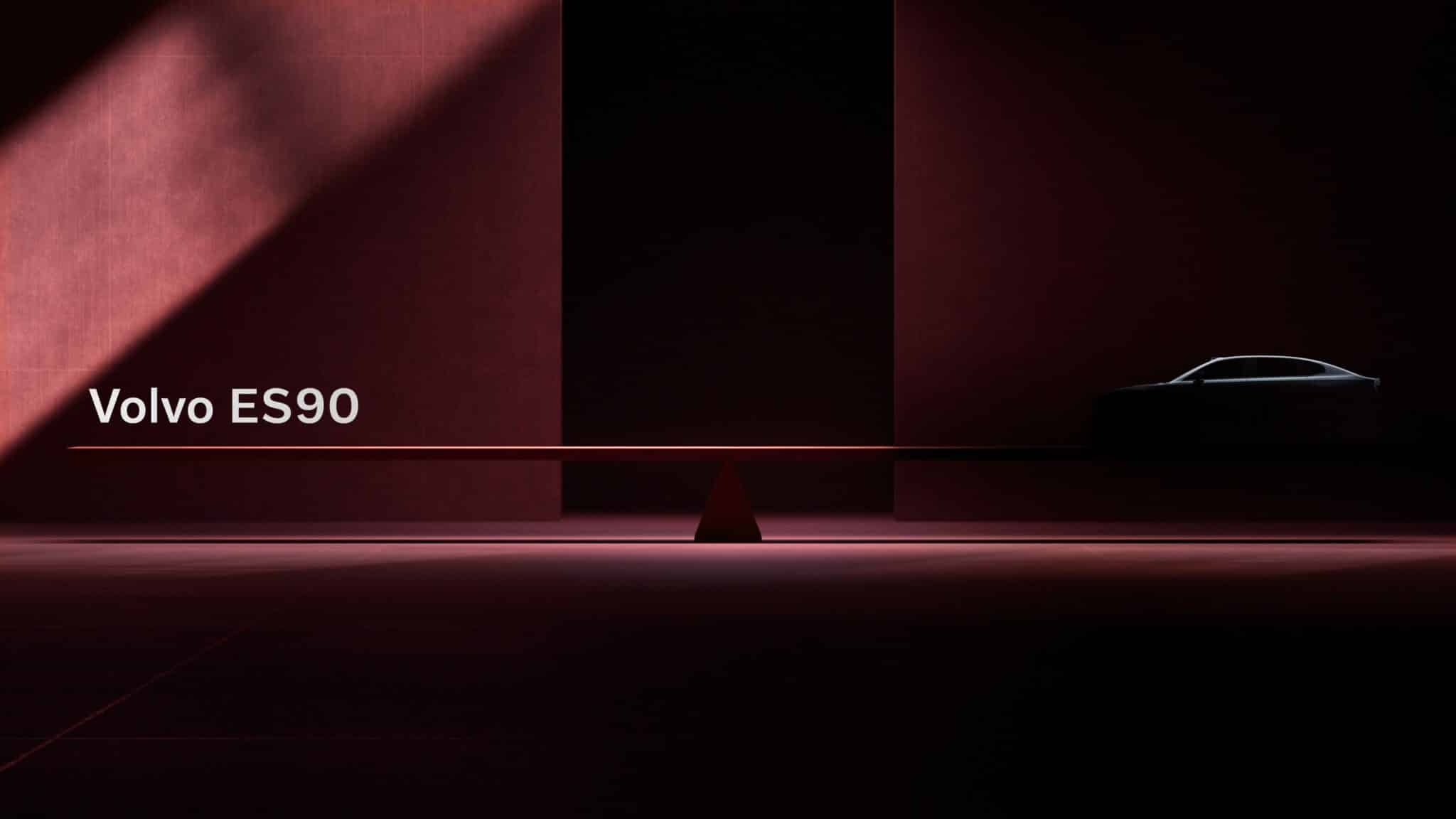
The ES90 will be officially unveiled in March 2025. Current pictures provide no more than a tease.
Let’s not forget the XC90 SUV
Volvo’s flagship seven-seat SUV, the XC90, is also getting an update. This old warhorse hasn’t seen any substantial changes since its second generation was launched in 2015.
The fresh iteration of the XC90 brings a host of new features and refinements to both hybrid and ICE versions. Externally, the SUV now sports a reimagined front grille alongside slimmer, contemporary headlight designs. The new look is completed with updated alloy wheels and darkened tail lights, providing a sleek and modern appearance that aligns with Volvo’s design ethos.
Inside, the cabin has undergone significant enhancements. A newly designed dashboard now features reshaped air vents and centres around an 11.2-inch infotainment screen, heralding a blend of functionality and modern aesthetics. These changes are aimed at elevating the driver and passenger experience, ensuring that the XC90 remains competitive in the luxury SUV market.
Performance-wise, all versions come standard with all-wheel-drive and an eight-speed automatic gearbox, carrying forward some of the strengths of the previous model. The engine options remain diverse, starting with the entry-level 2.0-litre turbocharged four-cylinder petrol engine, designated as ‘B5’. This engine produces 247bhp and 360Nm of torque, enabling the vehicle to accelerate from 0-60mph in 7.5 seconds.
For those desiring more power, the ‘B6’ variant features a 2.0-litre petrol engine equipped with both a turbocharger and a supercharger, boosting output to 295bhp and 420Nm of torque, and achieving a 0-60mph time of 6.5 seconds.
At the top of the range, the ‘T8’ plug-in hybrid model combines the same engine as the ‘B6’ with an 18.8kWh battery pack and an electric motor. This hybrid setup significantly increases overall power to 449bhp and 709Nm of torque, allowing the SUV to sprint from 0-60mph in just 5.2 seconds. Moreover, the plug-in hybrid variant boasts an impressive electric-only range of 44 miles, going some way to address the growing demand for eco-friendly driving options.
Jim Rowan, CEO of Volvo Cars, remarked on the enduring popularity of the XC90, stating, “Our hybrid flagship has been one of our best-selling models for years and it’s still a favourite among many customers. Whether it’s comfort, space, luxury, versatility or hybrid efficiency you look for, the XC90 delivers on all accounts.”
Back to the future
Volvo has always focused on safety. And it’s going back to its roots in the firm’s latest marketing. During its “90/90” presentation, Volvo unveiled the new hybrid XC90 and electric EX90, accompanied by an emotionally resonant advertisement. The ad depicted a couple preparing for the arrival of their first child and culminated in a scene where the car’s advanced sensor system prevents an accident, underscoring the importance of safety features.
The emphasis on safety is also becoming increasingly embedded in Volvo’s technological advancements. Anders Bell, the Chief of Engineering and Technology at Volvo, highlighted how the company plans to leverage artificial intelligence (AI) to enhance its safety measures. Historically, Volvo engineers manually collected data from accident sites, but the integration of AI promises real-time insights, substantially reducing the time required to apply safety improvements.
Bell also mentioned that Volvo is collaborating with several technology giants, including Google, Qualcomm, and Nvidia, to develop more sophisticated active safety features aimed at preventing crashes before they occur. Despite these advancements, Bell acknowledged that convincing customers of the security of their data remains a challenge the company is actively working to address.
Erik Severinson, Volvo’s Chief Strategy and Product Officer, maintains that the company’s commitment to safety encompasses more than just automation. He affirmed Volvo’s intention to persist with both passive safety measures, which protect passengers during collisions, and active safety measures aimed at crash prevention.
In its past, perhaps because of its obsession with safety, Volvo was often accused of being boring. The new models and top-spec makeovers look set to inject some real excitement and momentum into the brand.



